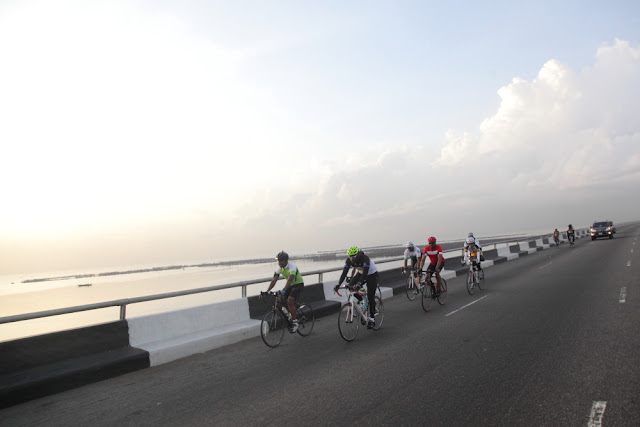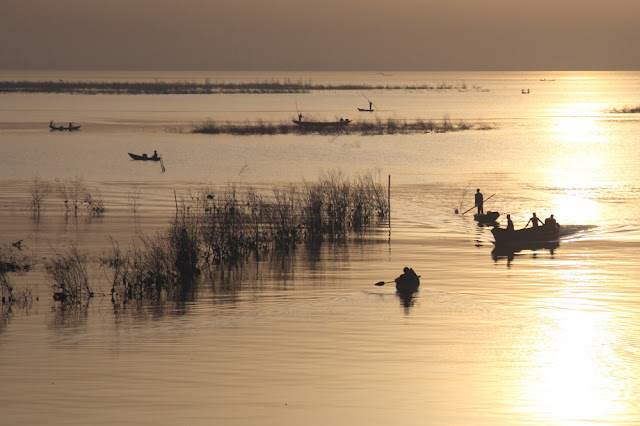 |
| Cycologists riding the bridge early morning |
The bridge is a highway with three or four lanes in each direction. It carries an impressive number of vehicles every day, especially during week days, to transport all the workers to and from the islands as well as goods.
The name of the bridge inspires an element of fear in the subconscious of Lagosians. A few years ago it used to be the place where armed robbers would come and pillage passing cars, possibly hurting or killing people in the process. Its length makes it an impractical place to get help if something happens, if a tyre bursts, an engine runs out of petrol or oil, or cooling fluid, or possibly a car accident happens. It was said that having to stop on the bridge was the most dangerous thing to do, rather abandon your vehicle and hike on a bus to go and get help, otherwise robbers would come from nowhere and take care of you. I also heard similar stories about the Marina Highway as it goes over Apongbon, stories dating back several years ago.
 |
| sailing together |
Motorbikes (okadas) are also driving there, slaloming among the already zigzagging vehicles. In a way, it is a miracle that so few accidents take place considering the impatience and vivacity of Lagosians.
Cycling is also a potentially dangerous but thrilling experience so it should be done in broad day light and preferably when traffic is scant, early morning on week-ends for instance. It is nonetheless a magical experience to cycle along the lagoon where the sky blends with the water, dotted with silhouette of fishing boats, some of them with sails. It gives the feeling of flying over the expanse of water.
 |
| early morning fishing |
This morning, I experimented riding on the bridge for the first time. Aside from the rather unpleasant and throbbing traffic noise, everything was quiet. I met another lonely cyclist who came from Maryland and was cycling back there. Young guys were jogging on the bridge, probably in preparation for the upcoming Lagos Marathon. I left the highway at Iyana Owono road to make a U-Turn. Suddenly the sound of the neighbourhood was a friendly one, music and joy was flowing from the many churches celebrating mass on this Sunday morning. The market was also buzzing. Life was everywhere. It came as a surprise after the relatively meditative journey over the bridge and in big contrast to the fairly well maintained streets of Ikoyi and Victoria Island where besides cars, the only noise is the one of generators, but it is devoid of the buzzing life found on Mainland. In a way, the bridge is really a physical separation between a popular African world and a more elitist and polished business and residential district.
On the way back, I noticed that Carter Bridge had lost two letters and had become "Car_er Bri_ge", I would have suggested to remove the G instead of the D...
 |
| flat and tired |
Comments
Post a Comment